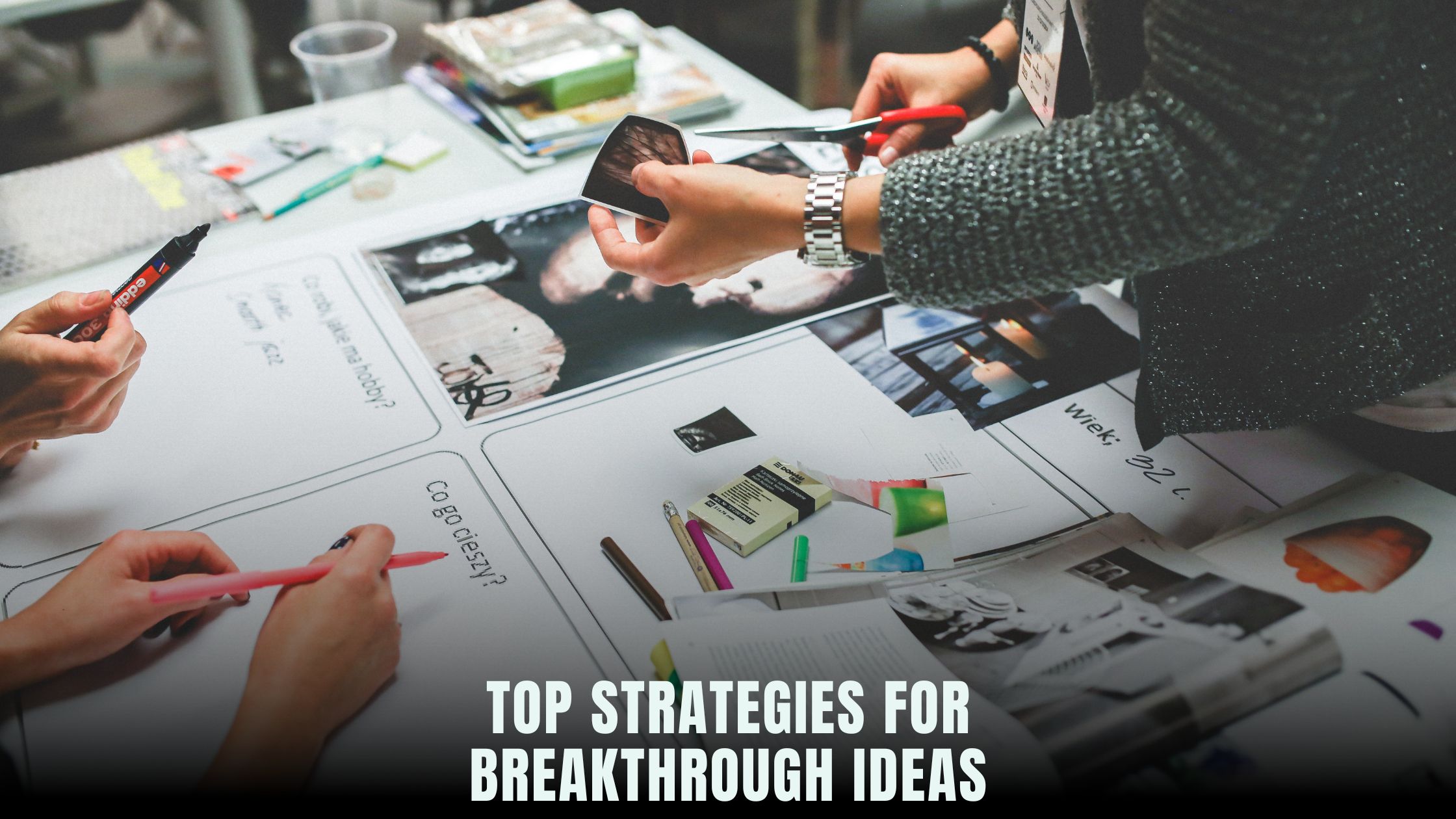Cultivating Creative Insight: Top Strategies for Breakthrough Ideas
- WebOps Platforms Bug Tracking & Feedback Software Web Development & Design


Looking to generate breakthrough ideas? Creative insight can help. This article explains what creative insight is, how it works, and techniques to foster it.
Key Takeaways
- Creative insight merges past experiences with future aspirations, serving as a crucial component for innovation and effective problem-solving.
- The process of creative insight involves four stages: Preparation, Incubation, Insight, and Verification, with ‘Aha!’ moments being key to impactful ideas.
- Techniques such as mindfulness, brainstorming, and reflective journaling can significantly enhance creative insights and foster a more innovative mindset.
Understanding Creative Insight


Creative insight is vital in many fields, connecting traditional methods with innovative solutions. These insights often lead to groundbreaking marketing strategies that resonate personally and strengthen brand connections. Fundamentally, creative insight is both reflective and dynamic, merging past experiences with future aspirations to create new pathways.
The reflective nature of creative insights means they need time and contemplation. Artists, for example, use these insights to explore deep human experiences, turning observations into narratives that emotionally connect with audiences. In business, grasping the psychological processes behind creative insight can enhance problem-solving.
Creative insight extends beyond solving current issues to envisioning future possibilities. It blends past knowledge with future ambitions, serving as a powerful tool for innovation and creativity. Understanding its essence allows us to harness its power for generating new ideas and solutions.
The Psychology Behind Creative Insight
The psychology behind creative insight reveals a fascinating interplay of mental processes and brain activity. Functional imaging studies suggest that the default mode network is active during creative thought, highlighting the brain’s role in generating these insights. This network, often associated with daydreaming and mind-wandering, underscores the importance of allowing our minds to drift and explore.
Creative insights generally develop through four stages:
- Preparation: Individuals gather information and immerse themselves in the problem.
- Incubation: Taking breaks enhances the chances of an insightful breakthrough. During rest, the brain continues working in the background.
- Insight: This is the moment when the “Aha!” realization occurs.
- Verification: The final stage involves testing and validating the insight.
By understanding these stages, you can better understand the creative process and foster innovative thinking.
Metacognitive prediction errors, where individuals surprise themselves with their problem-solving abilities, often trigger ‘Aha!’ moments. This highlights the spontaneous nature of creative insights. Understanding these processes allows us to better appreciate how insights emerge and how to foster such breakthroughs.
The “Aha!” Moment: How It Happens
The “Aha!” moment is a captivating experience marked by a sudden reconfiguration of a problem, not a gradual understanding. This clarity often brings positive emotions and a sense of coherence, as if puzzle pieces have snapped into place. This sudden clarity makes the “Aha!” moment memorable and impactful.
Research indicates that these moments of insight are not only associated with strong positive feelings but also lead to stronger retention of information compared to insights gained without such experiences. The surprise element, coupled with a sense of familiarity, makes the “Aha!” moment a powerful tool in creative problem-solving.
Knowing how these moments happen can guide us in creating environments and practices that foster more frequent and impactful insights, related expertise.
Techniques to Foster Creative Insight


Fostering creative insight involves a combination of clear objectives, playful activities, and hands-on experiences. Clear, written goals can enhance focus and creativity, simplifying engagement in the creative process. Even amidst busy schedules, small moments of play, daydreaming, and hands-on activities can significantly boost creative thinking.
Companies often harness creative insights to pivot and adapt their business strategies, leading to the launch of groundbreaking products. Books and courses on creative thinking provide numerous exercises and methods for nurturing innovative thinking, helping individuals push beyond their creative limits.
By integrating these techniques into daily routines, anyone can cultivate a more creative mindset and generate new ideas more consistent while they work hard.
Mindfulness and Meditation
Mindfulness practices are powerful tools for enhancing creative insight. By helping individuals let go of distractions and maintain focus, mindfulness opens up the mind to new ideas and deeper insights. Initial conscious thought followed by a distraction can lead to insight, making mindfulness combined with mind-wandering a potent strategy for idea generation.
Unconscious processes play a significant role during incubation periods, where the mind continues to work on problems in the background. Combining mindfulness practices with periods of mind-wandering can significantly enhance creative insight and problem-solving capabilities.
Brainstorming and Divergent Thinking
Brainstorming and divergent thinking are essential techniques for fostering creative insight. Divergent thinking fosters idea generation through a free-form approach, encouraging exploration of various possible solutions. Adding playful activities to brainstorming sessions can significantly boost team creativity and idea generation.
Effective brainstorming sessions are marked by psychological safety, enabling participants to take risks and share ideas freely. Creativity apps provide structured prompts and tools for facilitating brainstorming and idea tracking, making the process more efficient and productive.
Reflective Journaling
Reflective journaling is a valuable practice for enhancing creative insights. Maintaining a journal allows individuals to track their creative processes and identify patterns in their thoughts. This practice not only tracks thoughts and ideas but also increases the likelihood of creative breakthroughs.
Overcoming Barriers to Creative Insight
Overcoming barriers to creative insight is crucial for unlocking one’s creative potential. Fear of failure can hinder effective problem-solving, leading individuals to avoid risks and stifle creativity. Confronting fears of rejection and viewing criticism as an opportunity for growth can significantly enhance creative expression.
Passivity can stifle creativity; actively seeking new experiences stimulates innovative thinking. Encouraging a growth mindset and recognizing cognitive biases are essential strategies for overcoming barriers and fostering a more creative environment.
The Role of Environment in Creativity


The environment’s role in creativity is significant. Environmental psychology studies show that physical surroundings greatly impact how we think and feel, influencing our creative processes. Perceived expansive physical space correlates with greater openness to innovative thinking, enhancing creative ideation.
Higher ceiling heights and cool-colored walls, such as blue or green, have been linked to improved creative problem-solving abilities. Artwork depicting distant landscapes can evoke a sense of open space and foster a more creative mindset.
By creating environments that encourage creativity, individuals and organizations can unlock new levels of innovative thinking.
Real-World Applications of Creative Insight


Creative insight has profound applications across various fields, leading to significant advancements and innovative solutions. In business, art, or science, harnessing creative insights can transform ideas into practical applications, driving progress and innovation.
Business Innovation
In the business realm, creative insights are crucial for innovation and differentiation. Brands like Nurofen have leveraged creative insights to address gender disparities in pain perception, transforming their marketing into advocacy. Similarly, Honest Eggs creatively linked chicken activity to fitness trends, creating a compelling product narrative.
These examples show how leveraging creative insights can result in innovative marketing strategies that resonate with consumers. By investing in creative processes, businesses can develop new ideas and creative solutions that meet evolving market needs.
Artistic Expression
Creative insights play a pivotal role in the artistic process, enabling artists to break boundaries in their work. Exploring new techniques and themes allows artists to create unique and impactful art pieces that captivate audiences. The application of creative insights has resulted in innovative art movements and genres, showcasing the transformative power of creativity.
Leveraging creative insights is crucial for artists to produce compelling works that connect emotionally. Embracing the creative process allows artists to push boundaries and create pieces with lasting impact.
Scientific Discoveries
Scientific discoveries often involve recognizing the value of unintentional findings, like Alexander Fleming’s discovery of penicillin from mold contamination. The creative process benefits from allowing the mind to incubate problems, as shown by Friedrich Kekulé’s insight about benzene structure during a dream.
Serendipity plays a crucial role in scientific innovation, where unexpected results can lead to significant breakthroughs, as seen with the invention of Post-it notes from a failed adhesive experiment. By embracing uncertainty and the iterative nature of scientific inquiry, researchers can enhance their creativity and make groundbreaking discoveries.
Tools and Resources for Enhancing Creative Insight


Various tools and resources can enhance creative insight. Digital tools like brainstorming apps and mind mapping software facilitate the generation of ideas and insights. Workshops and courses focused on creativity offer structured environments for collaboration and idea generation.
Books and articles on creativity offer valuable insights and practical approaches to enhance one’s creative potential.
Digital Tools
Digital tools and apps can significantly enhance creativity by providing structured ways to generate and organize ideas. Brainsparker offers prompts to stimulate creativity using visual or text cues, while SimpleMind helps users create mind maps with various layouts, enhancing idea organization. Unstuck assists users in overcoming obstacles through guided questions and action steps, easing navigation through creative blocks.
Inkflow Visual Notebook allows users to draw and organize thoughts visually on their devices, providing a flexible platform for idea generation. Procreate Pocket is a comprehensive digital art app that offers tools for creating detailed artwork, catering to artists looking to enhance their creative output.
By leveraging these digital tools, individuals can appreciate the structured support they provide in the creative process, which is greatly appreciated.
Workshops and Courses
Participating in creativity-focused workshops and courses can be highly beneficial. These programs often incorporate assessments like the Torrance Tests of Creative Thinking, which measure and enhance divergent thinking abilities. Providing structured environments for learning and exploration, these workshops and courses help individuals develop creative thinking skills and generate new ideas.
Books and Articles
Books and articles on creativity are invaluable for enhancing creative insight. Recommended readings include “Creative Confidence” by Tom Kelley and David Kelley, focusing on harnessing creativity in all areas of life. “Art and Fear” by David Bayles and Ted Orland addresses the challenges of being creative, while “Steal Like an Artist” by Austin Kleon encourages embracing influences to enhance creative output.
These resources offer practical strategies and insights to support and inspire creative thinking.
Summary
In summary, cultivating creative insight involves understanding its psychological underpinnings, leveraging effective techniques, and creating conducive environments. By overcoming common barriers and utilizing various tools and resources, anyone can enhance their creative potential and generate breakthrough ideas. Embrace these strategies and let your creativity soar, transforming challenges into opportunities for innovation.
Frequently Asked Questions
What role does mindfulness play in fostering creative insight?
Mindfulness enhances creative insight by helping individuals maintain focus while allowing for mind-wandering, which opens them up to new ideas and improves problem-solving abilities. Embracing mindfulness can significantly boost your creative capabilities.
How can I overcome barriers to creative insight?
To overcome barriers to creative insight, actively seek new experiences and embrace a growth mindset while viewing criticism as a valuable opportunity for improvement. This proactive approach fosters resilience and paves the way for innovation.
What environmental factors enhance creativity?
Expansive physical spaces with higher ceilings and cool-colored walls, such as blue or green, enhance creativity by improving problem-solving abilities. Artwork representing distant landscapes can further stimulate a creative mindset.
How do digital tools aid in the creative process?
Digital tools streamline the creative process by providing structured methods for idea generation and organization, enhancing both efficiency and productivity. Utilizing platforms like Brainsparker and SimpleMind can significantly boost your creative output.
What are some recommended books for enhancing creative insight?
For enhancing creative insight, consider reading “Creative Confidence” by Tom Kelley and David Kelley, “Art and Fear” by David Bayles and Ted Orland, and “Steal Like an Artist” by Austin Kleon, as they offer valuable strategies and perspectives on fostering creativity.





